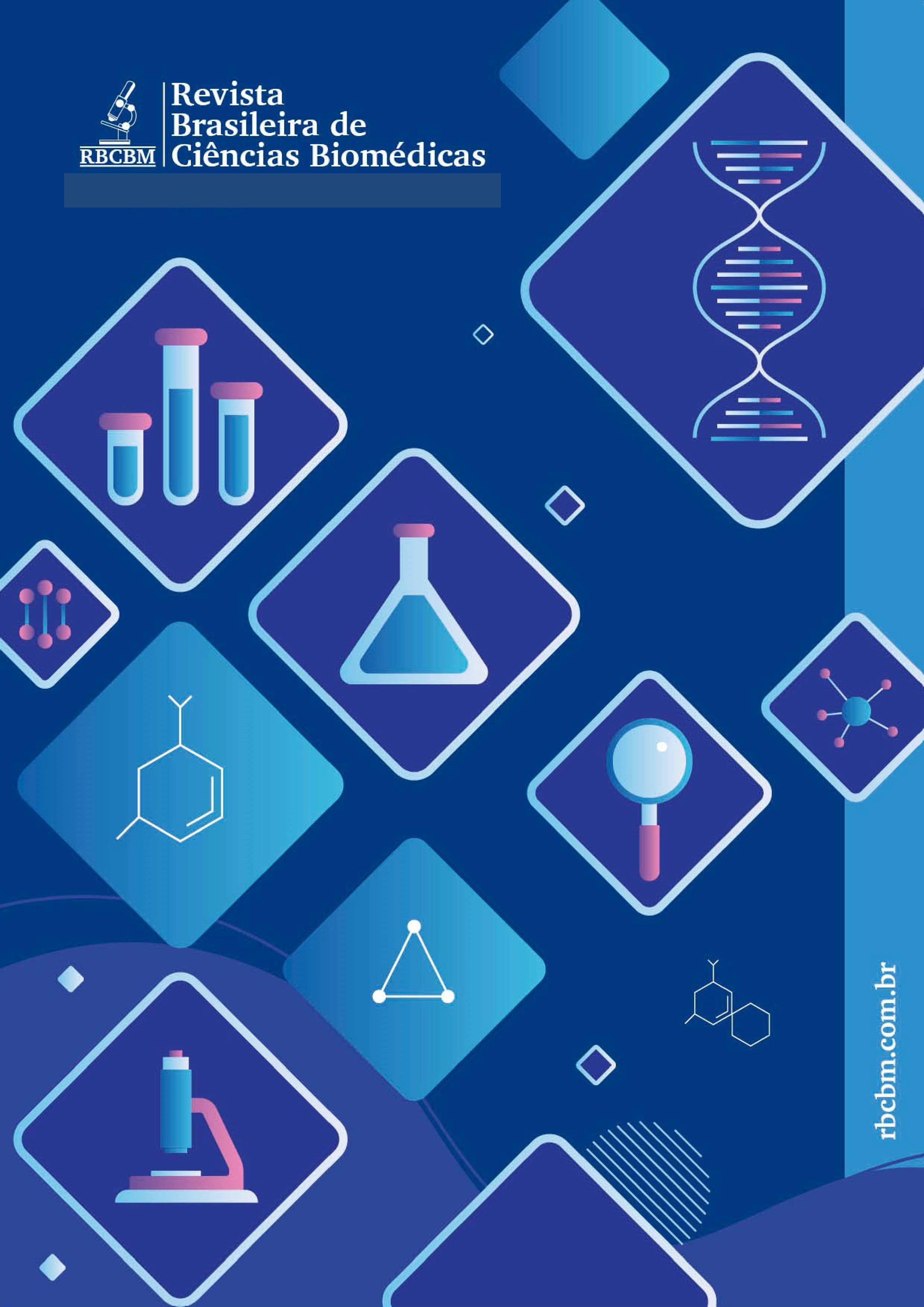Avaliação da Cicatrização e Fixação de Micropigmentação de Sobrancelhas
Main Article Content
Abstract
Deepening knowledge of the healing process and implantation of a pigment in the body is extremely important for the development of new technologies and methods. With the help of the studies carried out and the use of knowledge acquired throughout academic training in Biomedicine, it was possible to evaluate the process of healing and pigment fixation in the skin and thus prove how pigment fixation and healing is in 3 types of skin. many different. Objective: To carry out and evaluate the healing and pigment fixation of the shadow eyebrow micropigmentation technique on normal, dry and oily skin, in duplicate, totaling 6 participants aged between 22 and 31 years, living in the municipality of Santa Terezinha de Itaipu and served in the municipality of Foz do Iguaçu - PR. Method: Descriptive design with an exploratory qualitative approach to multiple cases, where the procedure was carried out directly. Data collection and selection was carried out through observation, questionnaire, interview, intervention and experimental research. Following the Fitzpatrick scale, participants were chosen according to phototype III skin color. Four pieces of equipment were used for the experiment: the melanometer, a phototype analyzer; Skin Up, a sebum, hydration and elasticity meter; a digital dermatoscope, for enlarging images; and a dermographer, to perform the technique. The project was approved on July 28, 2023, by the Ethics Committee (CEP) of the State University of Western Paraná, under opinion 6,206,692. Results: Of the 6 skins observed in the post-procedure phase, in relation to the level of oiliness and elasticity, 83.33% presented a higher level of oiliness than moisture and lower elasticity, being dry and oily skin. Of the skins studied, 66.66% had less vascularity and sensitivity. After 7 days of the procedure, 33.33% of the participants had no crust on their eyebrows, 33.33% had a little and 33.33% had a lot. Regarding color fixation, 33.33% had light color from the procedure, 50% medium color and 16.66% had strong color. It was possible to verify that 33.33% of the participants had pigment expansion, 33.33% had little expansion and 33.33% had no expansion. Conclusion: Women who have phototype III and normal skin, with good elasticity and a high level of hydration, have better pigment fixation than those who have dry and oily skin with little moisture. The scabs that form on oily skin are thicker than those that form on dry, normal skin. Dry skin is more sensitive.
Keywords: Skin. Symmetry. Visagism.
Introdução
Article Details

This work is licensed under a Creative Commons Attribution-NonCommercial-NoDerivatives 4.0 International License.
Copyright Statement - Policy Proposal for Open Access Journals
Authors who publish in The Brazilian journal of Biomedical Sciences (RBCBM) agree to the following terms: 1 - Authors retain the copyright and grant the journal the right to first publication, with the work simultaneously licensed under the Creative Commons Attribution License allowing sharing of the work with recognition of the authorship of the work and initial publication in this journal. 2 - Authors are authorized to assume additional contracts separately, for non-exclusive distribution of the version of the work published in this journal (eg, publishing in institutional repository or as a book chapter), with acknowledgment of authorship and initial publication in this journal. 3 - Authors are allowed and encouraged to publish and distribute their work online (eg in institutional repositories or on their personal page) at any point before or during the editorial process, as this can generate productive changes, as well as increase the impact and citation of published work.
This is an open access article under the CC-BY license
References
Referências
Giaretta E. Micropigmentação Arte e Responsabilidade. 7 ed. São Paulo: [s.n.]; 2018.
Hallawell P. Visagismo: harmonia e estética. 6. ed. São Paulo: Senac; 2018.
Oliveira H, Gonçalves T. Harmonização facial e técnicas na micropigmentação de sobrancelhas. Aee. 2019. [acesso 2023 out 11]: 1-15. Disponível em: http://repositorio.aee.edu.br/handle/aee/9536
SBDRJ. Fototipo de pele. Rio de Janeiro. [2023 out; acesso 2023 nov 9]. Disponível em: https://sbdrj.org.br/qual-e-seu-fototipo-de-pele/
Park JE, Barbul A. Understanding the role of immune regulation in wound healing. Am J Surg. 2004;187:S11-6. DOI: https://doi.org/10.1016/S0002-9610(03)00296-4
BCMED. Leitor de umidade, oleosidade e elasticidade da pele com tecnologia de análise de impedância bio-elétrica: Manual. Campinas. Delucca [2023 out; acesso 2023 nov 9]. Disponível em: https://www.bcmed.com.br/analisador-de-pele-facial-e-corporal-doctor-skin-doutor-da-estetica
Skinup Beauty Devices. Manual Analisador de pele. [acesso 2023 out 11]: Disponível em: https://www.meuskinup.com.br/download/
Singer AJ, Clark RA. Cutaneous wound healing. N Engl J Med. 1999;341:738-46. [acesso 2023 out 13]. DOI: https://doi.org/10.1056/NEJM199909023411006
Kede MPV, Sabatovich O. Dermatologia estética. 3.ed. Rio de Janeiro: Atheneu;2015. [acesso 2023 out 15].
Luebberding S, krueger N, kerscher M. Skin physiology in men and women: in vivoevaluation of 300 people including TEWL, SC hydration, sebum content and skin surface pH. International Journal Of Cosmetic Science, [s.l.], v. 35, n. 5, p.477-483. [acesso 2023 out 16]. DOI: https://doi.org/10.1111/ics.12068
Dyson M, Young S, Pendle CL, Webster DF, and Lang SM. (1988). Comparison of the effects of moist and dry conditions on dermal repair. The Journal of Investigative Dermatology, 91(5). [acesso 2023 out 18]. DOI: https://doi.org/10.1111/1523-1747.ep12476467
Vogt PM, Andree C, Breuing K, Liu PY, Slama J, Helo G, et al. (1995). Dry, Moist, and Wet Skin Wound Repair. Annals of Plastic Surgery, 34(5), 493-500. [acesso 2023 out 19]. DOI: https://doi.org/10.1097/00000637-199505000-00007
Baranoski, S., Ayello, E. (2012). Wound Dressings: An Evolving Art and Science. Advances in Skin and Wound Care, 25:87-92. [acesso 2023 out 20]. DOI: https://doi.org/10.1097/01.ASW.0000411409.05554.c8
Field, C. K., Kerstein, M. D. (1994). Overview of Wound Healing in a Moist Environment. American Journal of Surgery, 167(1AS) 2S-6S. [acesso 2023 out 18]. DOI: https://doi.org/10.1016/0002-9610(94)90002-7
Sakuma, Thais h.; Maibach, Howard I. Oily Skin: An Overview. S KinPharmacolPhysiol, An Francisco, Calif., Usa, n. 25, p.227-235. [acesso 2023 out 18]. DOI: https://doi.org/10.1159/000338978


